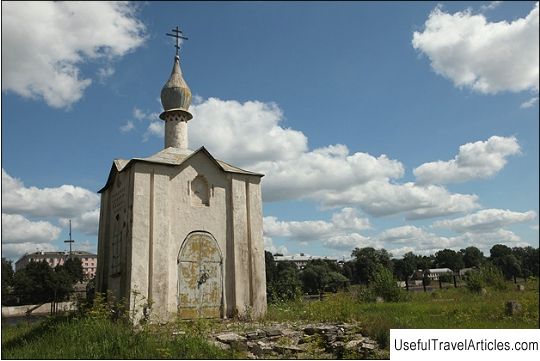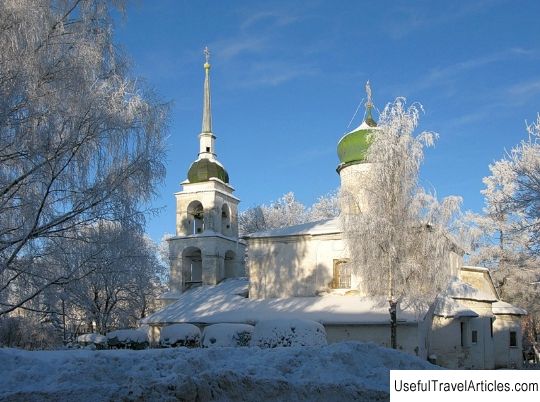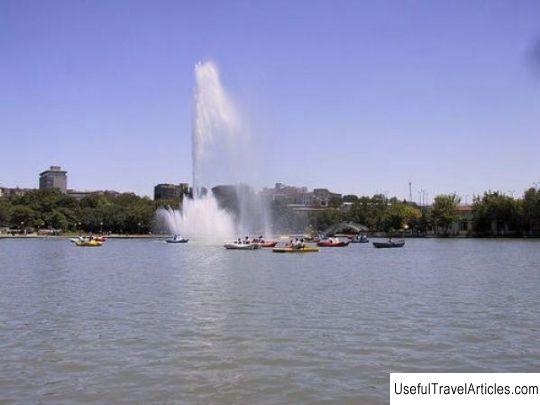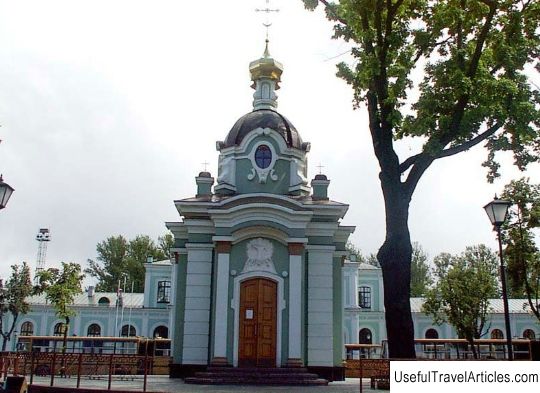Chapel of Anastasia Rimlyanka description and photos - Russia - North-West: Pskov
Rating: 7,7/10 (1382 votes) 
Chapel of Anastasia Rimlyanka description and photos - Russia - North-West: Pskov. Detailed information about the attraction. Description, photos and a map showing the nearest significant objects. Photo and descriptionThe Chapel of St. Anastasia is a truly unique and special phenomenon. The appearance of the temple is directed upward, which is more emphasized by a high and narrow drum - this is what distinguishes this monument from most of the monuments of ancient Pskov architecture, which is characterized by earthiness. The entire external appearance of the chapel is presented very light, which is fully consistent with the sublime spirituality and the light range of all images and colors of the interior. The chapel in the name of St. Anastasia stands on the bank of the Great River, next to the old ferry crossing. The unique monument is associated with the names of prominent figures of the cultural field: Roerich Nikolai Konstantinovich and Shchusev Alexei Viktorovich. The history of the Anastasievskaya chapel is much older than the monument that exists today, and goes back to the beginning of the 18th century, namely in 1710, when the great test awaited Pskov. The plague took the lives of a huge number of people; at that time the city was practically depopulated, and the Pskovites had only to turn to higher powers for help. According to ancient tradition, in order to block the path of a deadly disease, a one-day chapel built of wood was erected at the beginning of the road leading to the Baltic States. The Italian holy healer Anastasia was chosen as the patron saint, who more than once saved the Pskov residents from epidemics. The inhabitants of the city well remembered the terrible epidemic of 1710 and decided to take care of the saving chapel; after a while a stone chapel was built on the site of the wooden chapel, which existed for 200 years. The chapel of St. Anastasia stands at the entrance to the bridge, as if opening the city. In 1911, a permanent bridge was built across the Great River, named after Princess Olga, which was almost under the chapel. To erect the bridge, both banks of the river had to be leveled by making an earthen embankment. Residents of the city knew very well that they should not break the vow they made 200 years ago - not to fill up the Anastasievskaya chapel. In order to preserve the chapel, a stone superstructure was erected over it to the level of the embankment and a new stone chapel was erected in the name of Anastasia. The new chapel was designed according to the sketches of Alexei Viktorovich Shchusev, an academician of architecture. The chapel was founded on August 5, 1911 and was built from a lime flaky slab together with bricks. This is how the snow-white, airy and graceful Saint Anastasia appeared on the edge of the bridge, decorated according to the idea of A.V. Shchusev in the form of a thin lace decor - curb and runner - traditional for the architecture of the city of Pskov. At the end of October 1911, the consecration of the Olginsky bridge took place, while it is likely that the chapel was also consecrated. The painting of the chapel took place in 1913 by the restorer-icon painter Chirikov Grigory Osipovich based on sketches by the famous artist Roerich Nikolai Konstantinovich. The theme of intercession became the main and defining motive in the painting of the newly built chapel. As a result of the work of real masters of the whole business, a real unprecedented miracle was born. Right above the entrance to the chapel, the wings of an angel were spread, which held the image of the Savior on the Board. On the sides of the entrance, right below the angels, were depicted kneeling saint princes, as well as the heavenly patrons of the city of Pskov: Dovmont-Timofey and Vsevolod-Gabriel, who are depicted against the background of the faces of the Trinity Cathedral. In the hands of the patron saints are swords, and they themselves seem to be peering into the passage, which was once located on the north side. At the corners of the chapel of St. Anastasia, angels hold fluttering ensigns, protecting the world from the "earthly winds" - wars, pestilences, epidemics, natural disasters. In the lunettes located above the windows, Saint Nicholas and the Mother of God opened their intercession for the city. The vaulted ceiling of the chapel depicts the sky with the sun, moon and stars, as well as a symbolic image in the form of a stylized dove of the Holy Spirit, from whose face bright beams of light with fiery red cherubs emanate. Now the chapel has been transferred to private land , there are residential complexes around it, and visiting it is possible only with the consent of the Pskov Museum.    We also recommend reading National Park ”Circeo” (Parco Nazionale del Circeo) description and photos - Italy: Anzio Topic: Chapel of Anastasia Rimlyanka description and photos - Russia - North-West: Pskov. |




